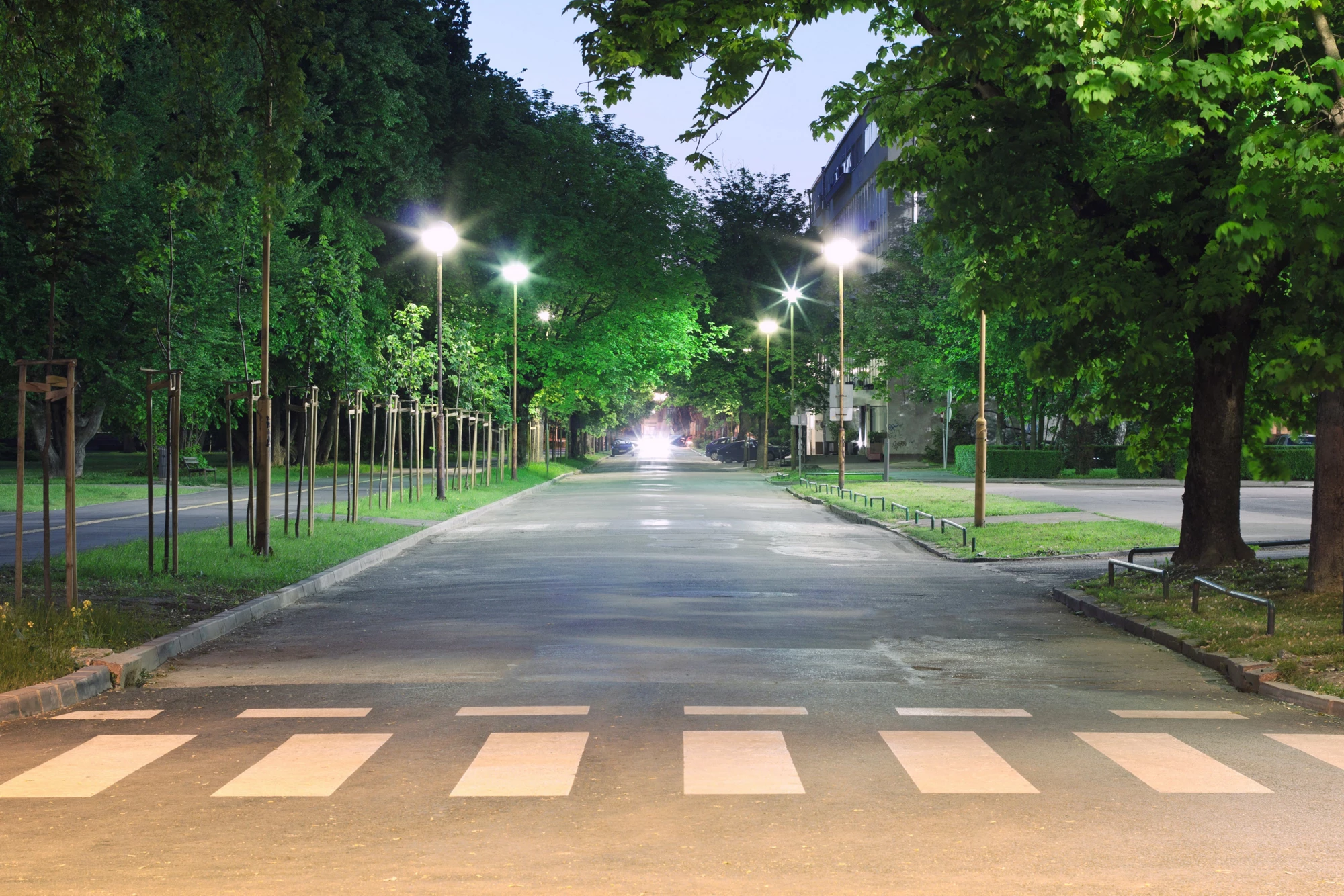
Further permission required for reuse.
Each city is unique, defined not only by the individuals who call it home but also by the energy it exudes…and consumes. Projections indicate that 5 billion people (60% of the world’s population) will live in cities by 2050 and, according to the International Energy Agency, the overall demand for lighting will be 80% higher by 2030 than in 2005. Street lighting energy consumption is an increasingly significant part of cities energy use and a growing burden on municipal budgets.
So, how can cities maintain this (growing) asset?
Many cities around the world are implementing public lighting programs for two main reasons –economic growth and community safety. Public lighting supports economic growth by increasing the amount of time that people can spend on dining and entertainment after dark. At the same time, studies have shown that public lighting can reduce crime by up to 20% and traffic accidents by up to 35%.
LED lighting benefits the environment and local authority budgets alike. LED lights are 40 to 60% more energy efficient than traditional lighting technologies. Simply by using LED luminaries, it is possible to provide better quality lighting, lower energy consumption, and reduce CO2 emissions. In the United States alone, replacing outdoor lighting with LED lighting can save US$6 billion annually and reduce carbon emissions by the equivalent of taking 8.5 million cars off the roads for a year. Operations and maintenance (O&M) costs also tend to be much lower because LED luminaires last at least four times longer than traditional bulbs. The cost savings can help ease the financial burden of municipalities that have tight fiscal budgets and are burdened by heavy utility bills. For example, in Quezon City, Philippines, street lighting constituted 65% of the city’s electricity costs and 5% of its overall budget. In India, street lighting electricity and maintenance costs can consume 5 to 10% of municipal budgets in large cities and up to 20% in smaller cities. Cities that invest in LED street lighting can then take the savings and invest in other services, such as sanitation, schools, or public health.
However, financial barriers and institutional constraints prevent many municipal cities from picking this “low-hanging fruit.” While the energy and cost savings potential of LED public lighting far outweigh the initial investment and physical retrofitting is relatively uncomplicated, the capital costs are still higher than those of traditional technologies. Unsubsidized LED luminaires can cost two to four times more than high-pressure sodium-vapor (HPS) luminaires, depending on taxes, exchange rates, the absence or presence of local manufacturing, and the size of the LED program. Capital investments can be too high for city governments that have few resources to deploy. Many municipalities in developing countries either lack the credit to raise money on the market, or the cost would be so high that the viability of the lighting program would be reduced dramatically. In addition, cities may face challenges including perception barriers, lack of a supportive regulatory environment, and low institutional capacity to develop and manage complicated business models.
Embarking on such projects can be daunting and confusing as how to effectively implement a LED street lighting projects. To better inform future project design and facilitate scaling-up of efficient street lighting, the World Bank’s Energy Sector Management Assistance Program (ESMAP) and Social, Urban, Rural, and Resilience Global Practice (GSURR) jointly published a synthesis report, Proven Delivery Models for LED Public Lighting, and six case studies that highlight successful delivery models for LED street lighting:
- Flexible Joint Procurement (Canada). Multiple cities across Ontario came together to procure LED lighting jointly to reduce costs—illustrating that small municipalities can jointly procure LED public lighting with the help of a strong regional association.
- Super-ESCO (India). The Ministry of Power set up a super energy service company (super-ESCO) that transformed the LED market in India by lowering LED costs through its bulk procurement program and setting standards for ESCO procurement.
- Private ESCO (India). One way to overcome the high up-front costs of implementing efficient public lighting is to leverage private funding and repay it through long-term energy savings. Asian Electronics Limited (AEL) applied this energy service company model in Central and Northwestern India.
- Lease-to-Own (Mexico). The municipality of Guadalajara, Mexico, introduced LED public lighting through a lease-to-own delivery model, with private company financing, a repayment guarantee from the state government, and technical assistance by the World Bank to help address the bureaucratic challenges.
- Municipal Financing (Philippines). Quezon, Philippines, used its own resources to finance the investment in LED lighting, thus cutting its high expenditure on public lighting.
- Public-Private Partnership (PPP) or “Bundle-to-Save” (United Kingdom). To reduce the transaction cost, the PPP model in Birmingham combines several infrastructure investments—including roads, streets, and bridges in addition to lighting—under one PPP contract.



Join the Conversation